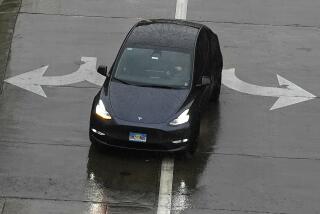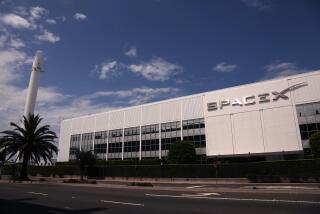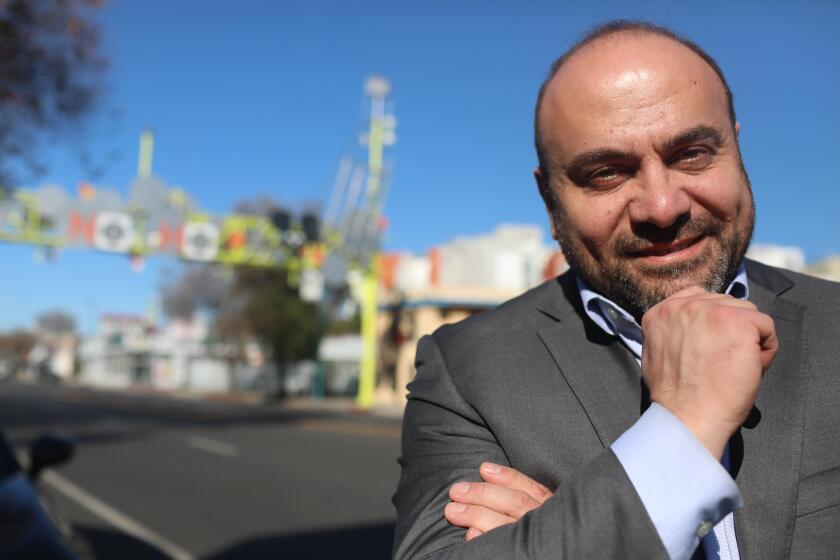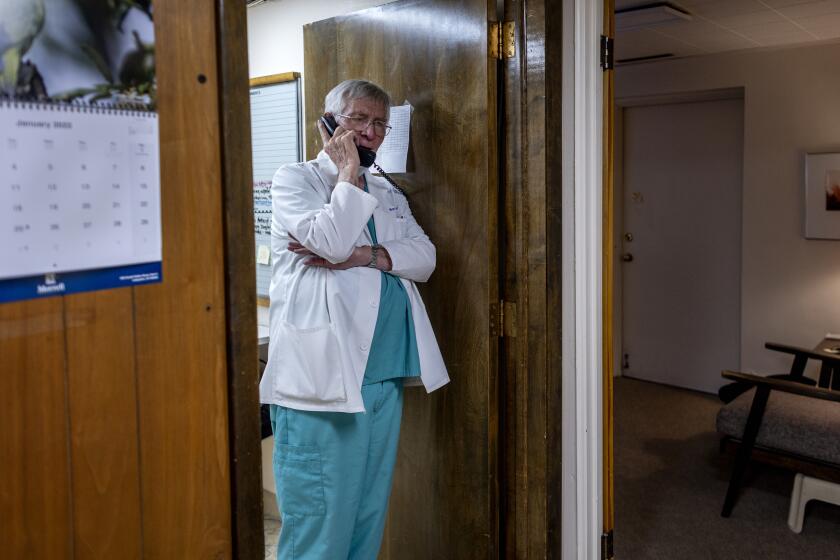Editorial: Is California too green for Tesla’s ‘gigafactory’?
When Palo Alto-based Tesla Motors announced plans to build a $5-billion battery “gigafactory,” it listed four states as possible homes — none of them California. Since then, feverish wooing by Gov. Jerry Brown’s administration and some state lawmakers has led Tesla to consider building the factory here, but at least two hurdles remain, both of them related to the state’s efforts to protect the environment. It would be no small irony if Tesla turned up its nose at California, where it sells a third of its electric cars, because the state proved to be too green.
States covet manufacturers because they tend to pay employees well and can create a slew of additional jobs at the companies that supply them with parts and raw materials. And Tesla’s 6,500-employee battery plant, which it wants to have up and running by 2017, comes at a time when manufacturers are doing more with fewer workers and big new factories are scarce.
Tesla’s assembly lines are in Fremont, so you might think California would have the inside track for the battery plant. One predictable hurdle, though, is the California Environmental Quality Act, which subjects any major land-development proposal to a tough and potentially drawn-out review. This page has joined the chorus of critics who’ve urged lawmakers to speed those reviews and stop the anti-competitive gamesmanship that the act enables, to no avail. In the absence of such reforms, the Brown administration and top lawmakers are poised to offer Tesla essentially the same streamlining the Legislature approved in 2011 for large, job-creating projects in urban areas. Under that law, which expires in January, once a developer has completed the required environmental impact report, any legal challenges go straight to the Court of Appeal and must be decided within six months.
Streamlining the CEQA reviews should be enough of an accommodation, given that Tesla Chief Executive Elon Musk has said he’s just trying to speed up the process, not exempt the factory from environmental mandates. Not that he could say anything else; it would be profoundly hypocritical for Tesla, which bills itself as part of the solution to global warming, to build a pollution-spewing battery factory. But the company is said to be pressing for even greater concessions that would allow it to build the plant before the environmental impact studies were completed, then mitigate any environmental problems it discovers later. That would set a dangerous precedent.
And when it comes to powering said factory, Tesla is considering states whose electricity is considerably less environmentally friendly than California’s. The state is second in the nation in renewable sources of energy, behind only Washington and its ample supplies of hydropower. More than 40% of California’s electricity is generated from non-fossil-fuel sources that add no carbon to the atmosphere. By contrast, only about 18% of the power used by Nevada — where Tesla has already broken ground on a possible site for the factory — comes from renewable sources, with less than 2% from solar.
California’s commitment to clean energy does come at a cost. Its electricity rates are among the highest in the country, and are more than 60% higher on average than Nevada’s. Aggressive energy conservation efforts have kept household energy bills comparatively low here despite the high rates, but that offers little comfort to Tesla, whose battery plant will use an enormous amount of power.
Tesla has hinted that it wants to generate at least some of its own energy for the factory through solar and wind farms near the plant. And for the rest of its power demands, as a large industrial consumer, it could certainly negotiate more favorable rates from the local power company. Southern California Edison, for example, already offers discounts of up to 30% for new industrial customers. And Brown’s Office of Business and Economic Development has an annual budget of $150 million for tax credits to recruit and retain employers, some of which could be used to offset Tesla’s energy costs.
It’s not clear to state officials, however, what exactly Tesla is looking for from California, other than an offer it can use to wring more concessions from the other states competing for the factory. State officials want the company to commit to building the plant here in exchange for a package of incentives, but Tesla has demurred. And why wouldn’t it want to keep playing the field? It won’t help Musk’s image as a climate-change crusader, though, if he rejects California because the Golden State’s environment protections are too costly.
Follow the Opinion section on Twitter @latimesopinion
More to Read
A cure for the common opinion
Get thought-provoking perspectives with our weekly newsletter.
You may occasionally receive promotional content from the Los Angeles Times.










